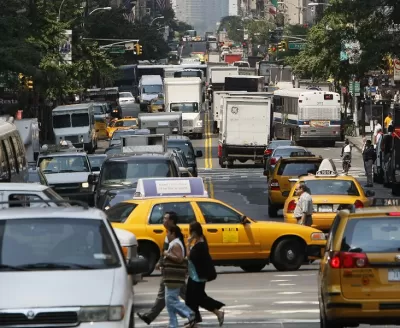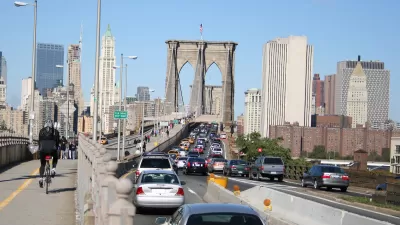The Metropolitan Transportation Authority has resubmitted its environmental impact assessment to federal officials, who sent the agency over 400 additional questions earlier this year.

According to an article by Stephen Nessen in Gothamist, New York’s Metropolitan Transportation Authority (MTA) has completed its response to over 400 questions sent to the agency by the Federal Highway Administration (FHA) regarding the environmental impact of the city’s proposed congestion pricing scheme, a key step in moving forward with implementation of the program. The program would enact cordon pricing (a fee charged for entering a specific area) south of 60th Street in Manhattan.
“Once the Federal Highway Administration (FHWA) approves the MTA’s environmental assessment the MTA still has a long way to go. It must conduct more public outreach, install devices to collect the tolls, and set a price that will ultimately raise $1 billion a year in revenue.” As Nessen points out, the program was initially scheduled to begin collecting revenue in 2021, but the MTA now expects. However, “Because congestion pricing was first delayed by the Trump administration, and then by the pandemic, and finally by the recent round of federal questions, the 2020-2024 capital plan will be in its last year by the time congestion pricing is actually generating revenue.”
A June 2022 poll found that 42 percent of New Yorkers intend to drive less, and 64 percent would make the switch to public transit, if congestion pricing took effect. The program would exempt New Yorkers who live in the congestion zone and earn less than $60,000 per year.
FULL STORY: MTA’s congestion pricing program back on track, again

Study: Maui’s Plan to Convert Vacation Rentals to Long-Term Housing Could Cause Nearly $1 Billion Economic Loss
The plan would reduce visitor accommodation by 25,% resulting in 1,900 jobs lost.

North Texas Transit Leaders Tout Benefits of TOD for Growing Region
At a summit focused on transit-oriented development, policymakers discussed how North Texas’ expanded light rail system can serve as a tool for economic growth.

Using Old Oil and Gas Wells for Green Energy Storage
Penn State researchers have found that repurposing abandoned oil and gas wells for geothermal-assisted compressed-air energy storage can boost efficiency, reduce environmental risks, and support clean energy and job transitions.

Santa Barbara Could Build Housing on County Land
County supervisors moved forward a proposal to build workforce housing on two county-owned parcels.

San Mateo Formally Opposes Freeway Project
The city council will send a letter to Caltrans urging the agency to reconsider a plan to expand the 101 through the city of San Mateo.

A Bronx Community Fights to Have its Voice Heard
After organizing and giving input for decades, the community around the Kingsbridge Armory might actually see it redeveloped — and they want to continue to have a say in how it goes.
Urban Design for Planners 1: Software Tools
This six-course series explores essential urban design concepts using open source software and equips planners with the tools they need to participate fully in the urban design process.
Planning for Universal Design
Learn the tools for implementing Universal Design in planning regulations.
Ascent Environmental
Borough of Carlisle
Institute for Housing and Urban Development Studies (IHS)
City of Grandview
Harvard GSD Executive Education
Toledo-Lucas County Plan Commissions
Salt Lake City
NYU Wagner Graduate School of Public Service





























